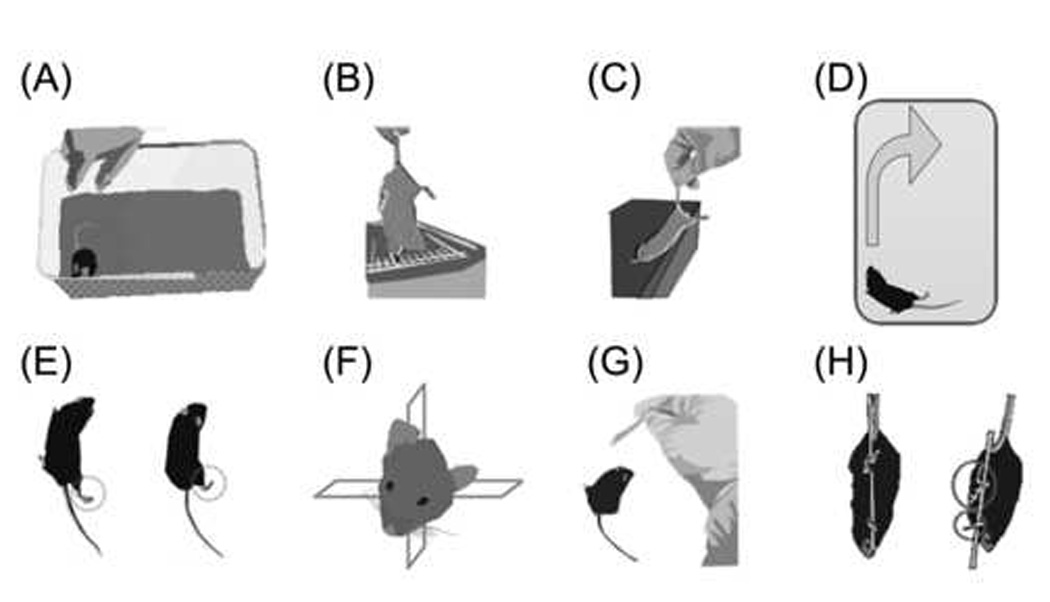Figure 3.

Individual SNAP tests. (A) Interactions. Upon removal from the cage, an uninjured mouse usually avoids being handled whereas an injured mouse would hesitate to escape. (B) Cage grasp. A mouse was suspended by the tail over the cage and allowed to grasp the bars. The mouse was slowly lifted away from the cage, noting the strength of the grasp and whether the paws released simultaneously. (C) Visual placing. A mouse was suspended by the tail and slowly advanced toward a ledge. Uninjured mice arched their back and reached out with both forepaws before touching the ledge (visual component). (D) Pacing/circling. Uninjured mice would ambulate in random directions. Some injured mice paced in the same general direction and were resistant to being guided into the opposite direction. (E) Gait/posture. Uninjured mice kept all four limbs tucked beneath the body when standing or ambulating. Weakness, dragging or abduction of contralateral limbs was observed in many of the injured mice. The mouse on the left shows abduction of the right pelvic limb. The injured mouse on the right shows a standing posture with all but the contralateral pelvic limb tucked well under the body. (F) Head tilt. The head posture of some injured mice was rotated within the coronal plane. (G) Visual field. A fiber-tipped applicator was waved on each side of the mouse, approaching from behind and avoiding contact with the vibrissae. Many uninjured mice would startle or turn toward the movement, whereas injured mice would often not react. (H) Baton. A mouse with sham injury (left) would grasp the applicator stick with all four paws. Often the mouse would attempt to “climb” the stick. A brain-injured mouse (right) had more difficulty locating and grasping the swab with the contralateral fore and hind paws.
